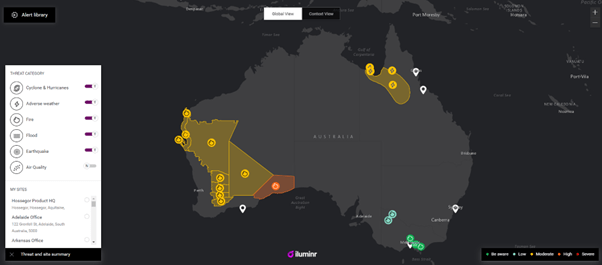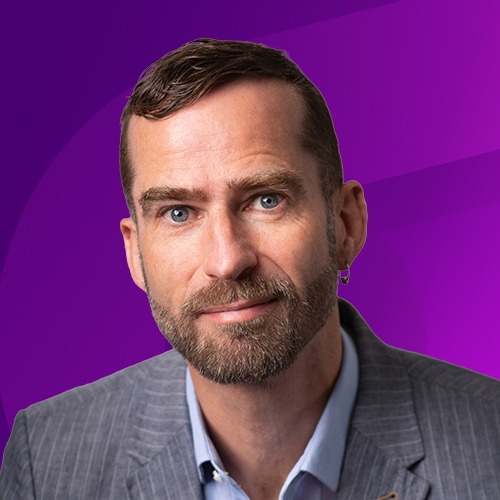Now needing to update to 21st century business-as-usual systems, 2020 was the technological wake up call risk management teams had to have.
2020 was the tipping point for a complex new environment. With many of our regular operating rhythms overwhelmed, a looming recession, and global pandemic, our exhausted human capacities opened the door for a new every day tool.
Taking advantage of a rapid period of change, organizations worldwide have continued to develop complex systems to enhance both society and the economy at large. Often fueled by a desire for increased efficiency, this rapid pace of development produced digital toolsets uplifting manufacturing, logistics, and more recently, video conferencing to a level never seen before.
Even with the rapid-fire pace of digital advancement, and the vital need for critical event responses across 2020, technological integration, connectivity, and automation somehow left risk management behind.

Before 2020, many organizations carried out manual risk management analysis on a periodic basis. Although some legacy systems were adopted to digitalize the experience, the rhythm of risk management has by and large remained:
1. Risk Questionnaire
2. Workshop
3. Updating of Risk Register
4. Consolidation and Validation
5. Reporting to Board
6. Repeat
Even though this process supported organizations with environmental scanning, preparation, and control enhancement measures in the past, the structure fundamentally suffered when the speed of technological change, and frequency of critical events, outpaced yesterday’s best practice.
If the tempo changes do you change your step or fall out of time?
Though much time and investment has been made in technology to increase efficiency and growth, the investment committed to managing uncertainty has fallen short.
Often lagging behind recent technological advancements, many risk management teams still rely on first generation solutions that require high user engagement and time-consuming tasks to achieve consolidated data.
Seeing the need for a more dynamic solution to critical event management—one that supports active risk-based decision making at an operational level—third generation SaaS technology has come together to enhance the risk management experience.
Designed to centralize and contextualize organizational threat landscapes, third generation SaaS technology can catapult 21st century best practice at a pace unseen before.
Lets look at a live example.
Facing a 2020-21 La Niña season, Australia’s Bureau of Meteorology (BOM) predicts significantly higher than average rainfall this year. Past experience with these same events suggests that much of the north-east and eastern coastal communities in Australia will see severe storms, cyclones, and potential flooding events for the next few months.
 Highlighted by the Australian Business Roundtable for Disaster Resilience and Safer Communities 2017, flood damage has historically cost the Australian economy more than cyclones, storms, bushfires, and earthquakes—costing an estimated $8.8 billion per year.
Highlighted by the Australian Business Roundtable for Disaster Resilience and Safer Communities 2017, flood damage has historically cost the Australian economy more than cyclones, storms, bushfires, and earthquakes—costing an estimated $8.8 billion per year.
With our supply chains highly reliant on both the interconnectedness of infrastructure and private enterprise, few organizations would be unaffected by a major flooding event.
Given this, how can we better prepare for increased environmental threats while navigating a global health crisis? At Catalyst Technologies, we fused together industry best critical risk and resilience processes with technology to:
1. Actively monitor threats, leveraging real-time data feeds
2. Analyze risk dynamically, contextualizing data into risk information
3. Operationalize responses through automated alerts and playbooks
4. Centralize intelligence to create a common operating picture
Through active threat monitoring organizations can enhance their risk assessment process, delivering the key ingredient to effective risk and threat management: speed.
By performing ongoing, silent monitoring of organizational environments against pre-defined risk thresholds, real-time threat alerts inform key decision makers of impending risk events before they materialize.
Knowing ahead of time about the possibility of an escalating event, organizations can effectively respond following guided workflows that include often forgotten about incident and impact assessments.
In the example of a flood event, with advanced warning of the impending threat according to critical asset location, a regional manager may be alerted and actioned to assess the impact to the organization’s supply chain.
Now able to escalate the incident to head office, this area-specific manager is able to operationalize the right flood response plan to further mitigate impact and risk.

Verified data—such as a live-data feed streamed from BOM—can be contextualized to organizational risk thresholds. Of no immediate use without context and streamlined for quality and quantity, third generation context analysis can turn data into intelligence feeds that minimize white noise and alert fatigue.
An example of an active threat monitoring system designed for the 21st century, iluminr has merged best practice with innovative, low-engagement technology to support informed decision making regardless of the risk at hand.
Centralizing intelligence is key to creating a common operating picture throughout pending and materialized disasters. Vital in the face of simultaneous, compounding critical events, 2020 confirmed the need for this and integrated two-way communication channels to ensure that information is available and actioned in real time.
Risk Management in a New World
When asked at the beginning of the year “What role do you believe Risk Managers have to play through all of this?” the answer was simple: “Leadership”. Relied on to provide direction and leadership through the application of risk-based decision making when facing uncertain events, the need for equipped Risk Managers will continue to grow as our environment continues to evolve.
With the pace of change in both technology and environmental risks expected to increase, the role of the leaders and Risk Managers alike will be relied upon to adopt innovation and new practices to help organizations thrive through challenging events.
—
Written by Marcus Vaughan – Chief Growth Officer, Catalyst Technologies















